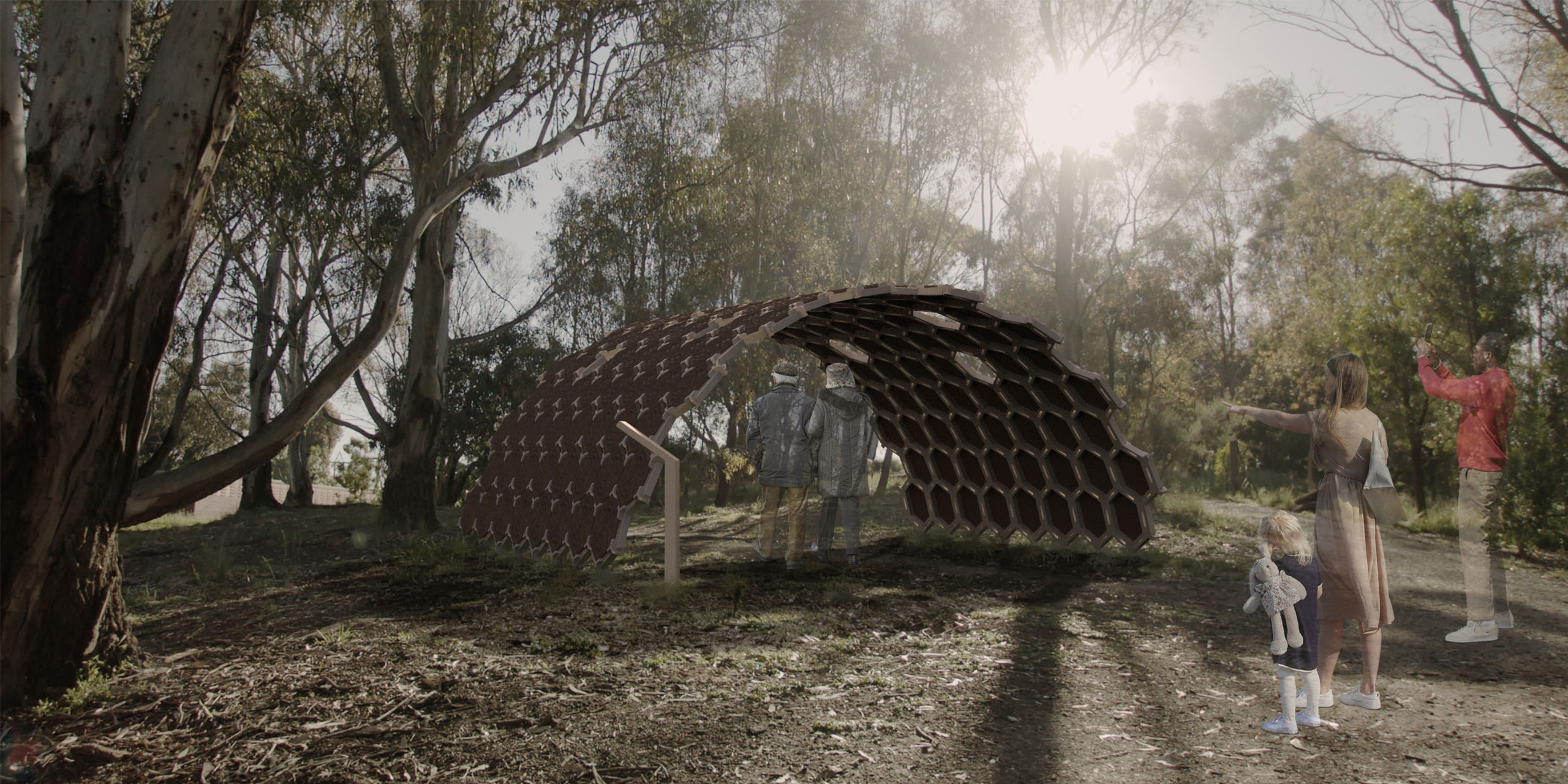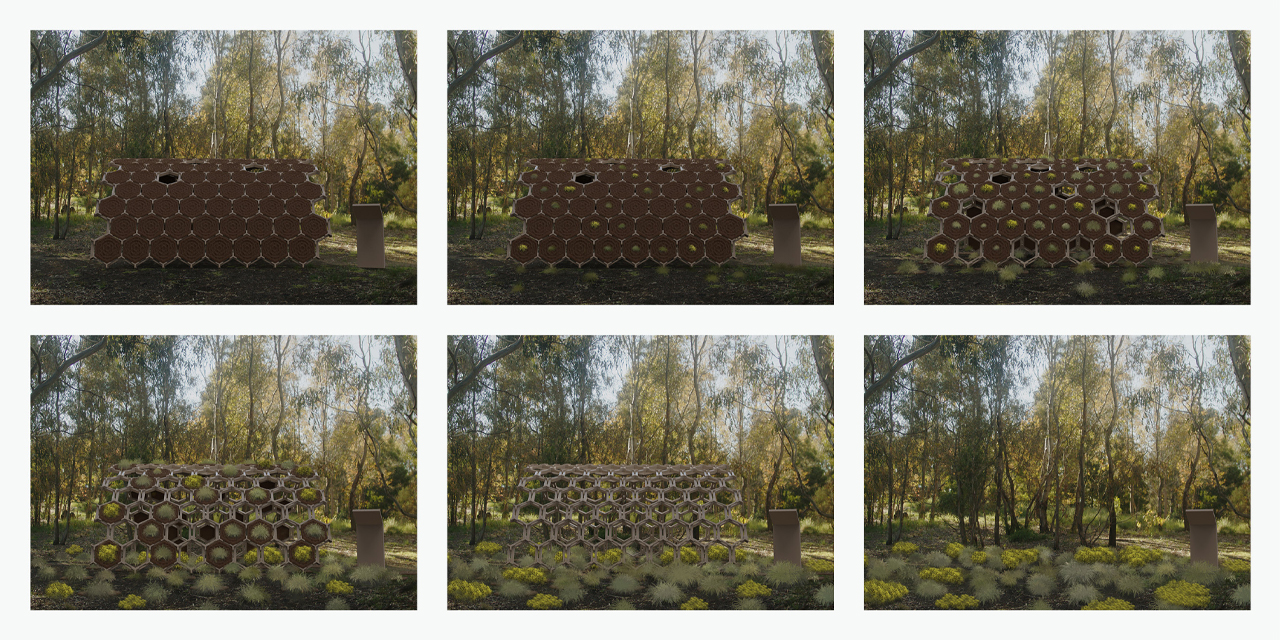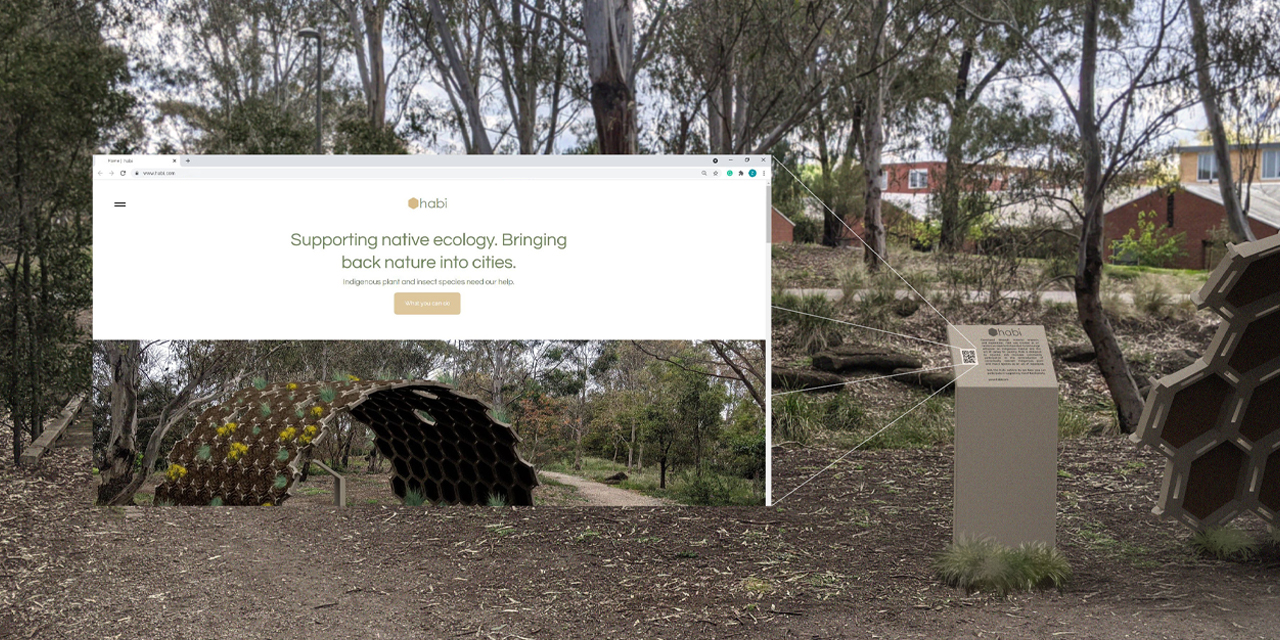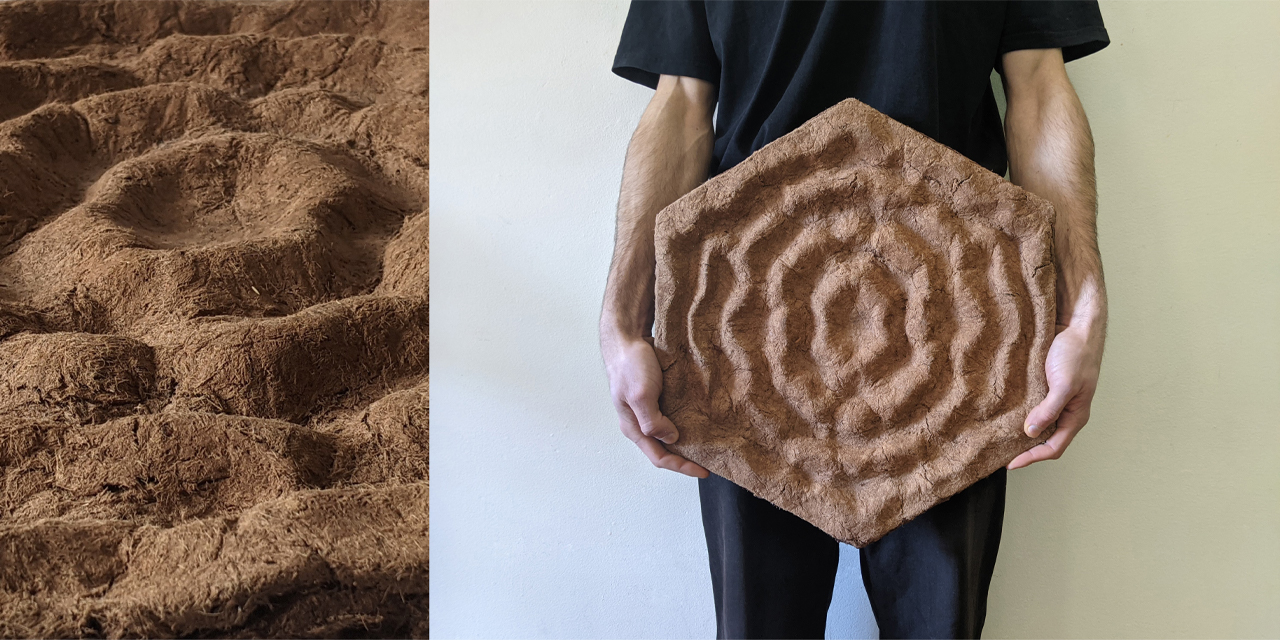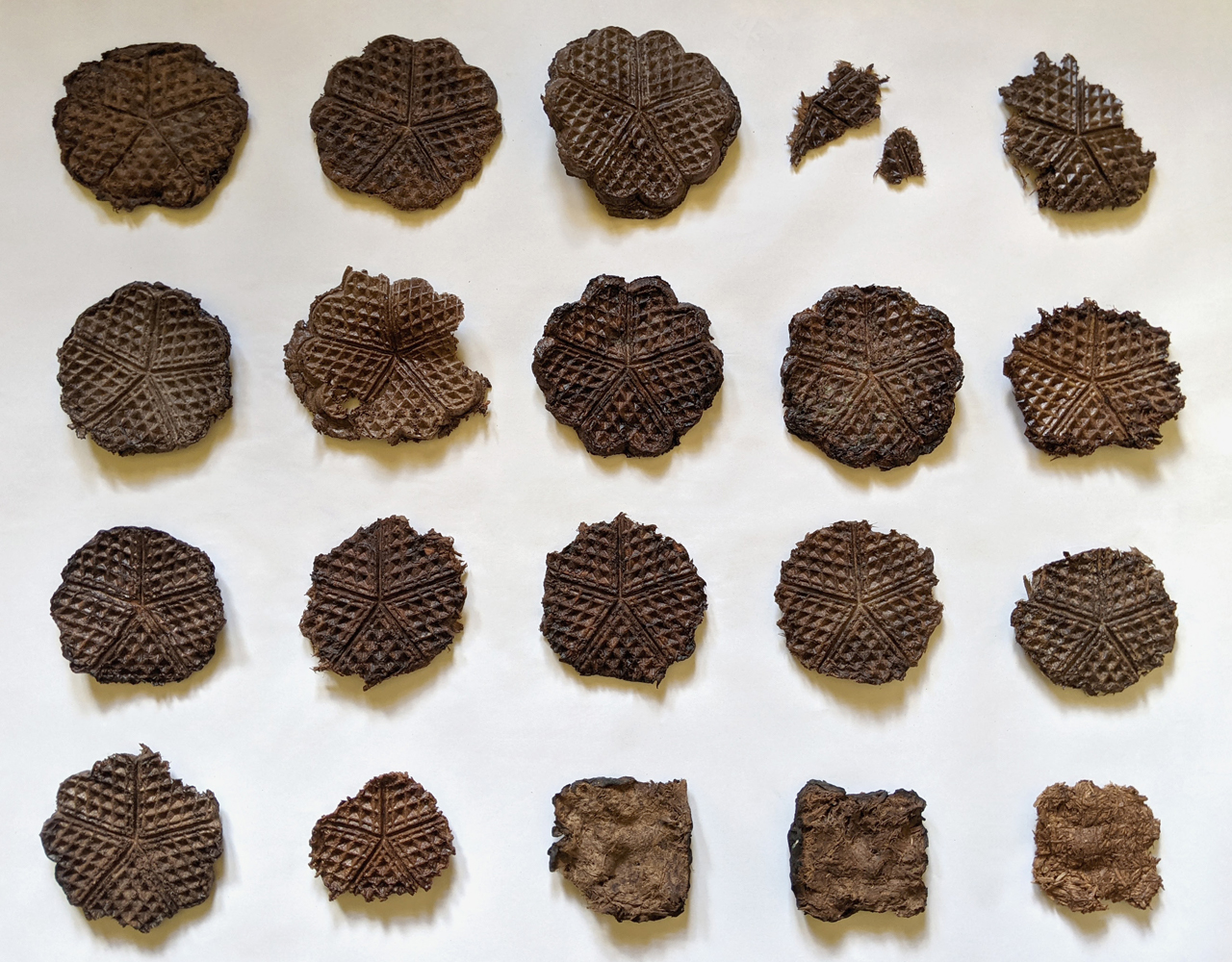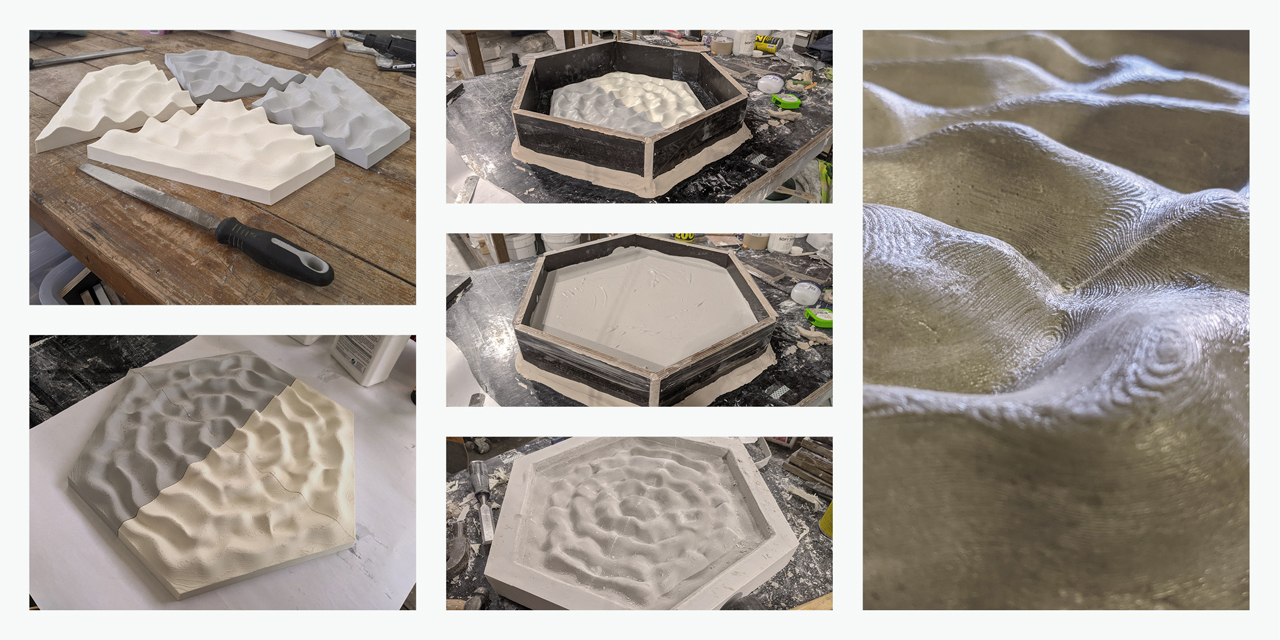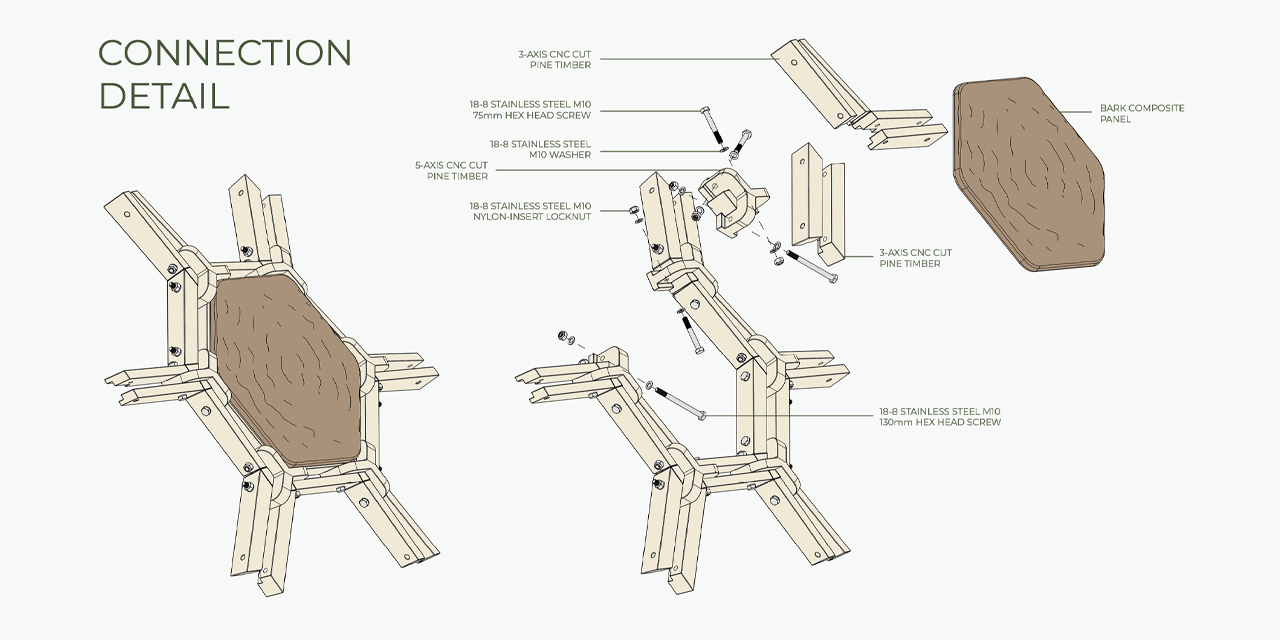Environmental and social issues underpin my design theory and practice. This project presented an opportunity to integrate inter-species design with traditional production methods. The design process was driven by research collected from cultural consultation with the Wurrundjeri Woi Wurrung Cultural Heritage Aboriginal Corporation, in depth literature reviews, input from Ecologist and Entomologist Dr Luis Mata and material research.
The project seeks to perceptually reframe human and non-human relationships through the act of caring for country in urban environments. As such, the project is formally experimental and speculative, and tested through material research and production in order to develop a fully bio-degradable composite panel.
Process driven design through iteration ultimately informed the outcome of the Habi pavilion panel. The pavilion design references the geometrical optimisation of the native “sugarbag” Tetragonula carbonaria bee hive which informs the arrangement of the hexagonal panels. A colony of sugarbag bees will build and provision each cell before the queen lays her eggs in each one. Similarly, the Habi panel acts as a cell for the germination and birth of native plant species. The surface texture was designed to encourage catchment of organic material to aid in germination process. Gold dust wattle Acacia acinacea and common tussock grass Poa labillardieri were selected as seeds to be integrated within the surface layer of each panel in order to attract a variety of insect species and increase biodiversity.
Habi is a space for contemplation and reflection that manifests the cycle of renewal and decay. Eventually, Habi’s frame is made redundant and is removed from the site, opening the potential for implementation in a new location. What remains are Indigenous plant and insect species in locations they originate from and the shared knowledge on why and how individuals may care for country.

